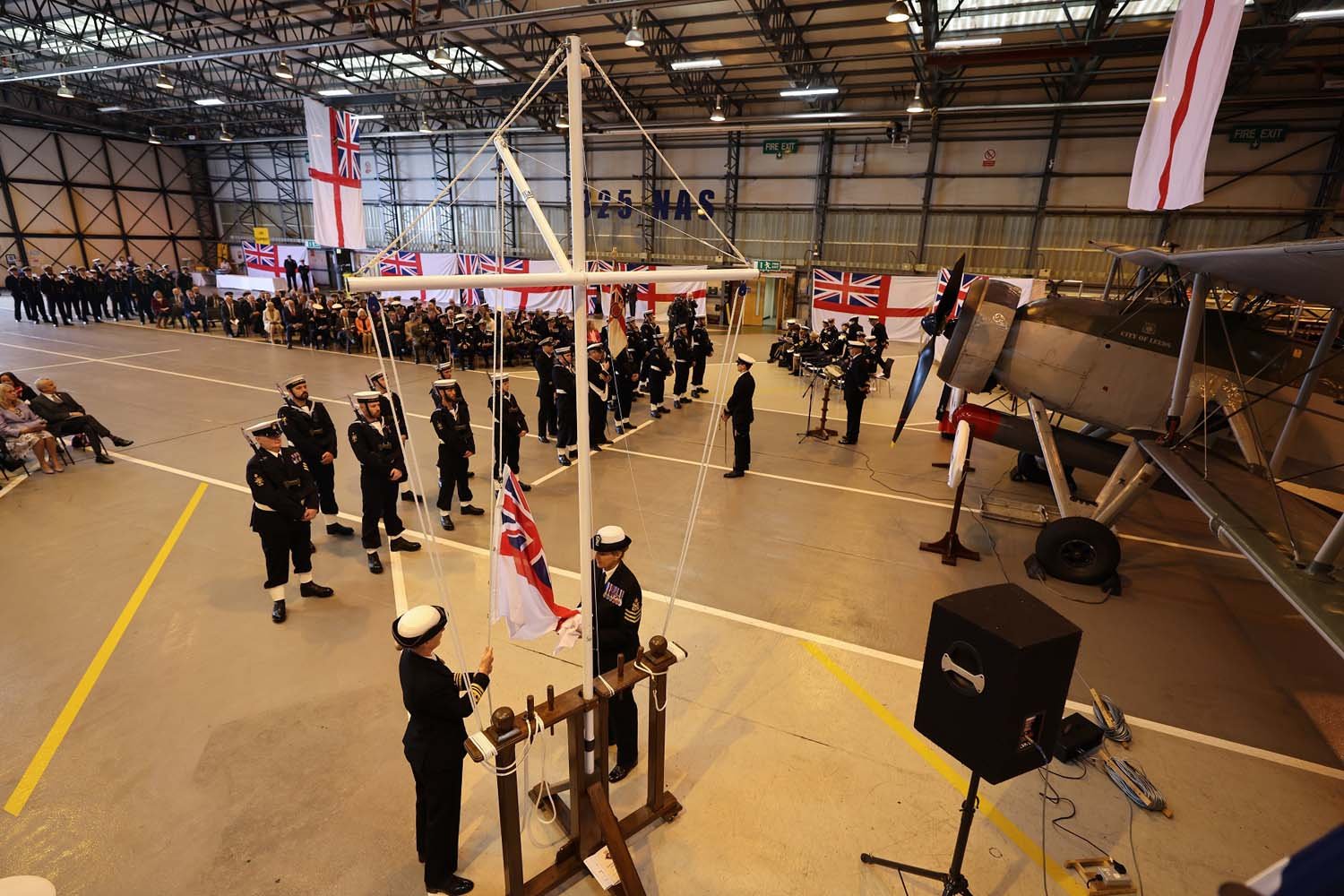Prince Michael of Kent was the principal Guest of Honor at a commissioning ceremony as the Royal Naval Reserve Air Branch became His Majesty’s Ship (HMS) Pegasus at Royal Naval Air Station Yeovilton in Somerset.
It was the first commissioning of a ship, albeit a stone frigate, under a King since 1948 when His Majesty’s Submarine Acheron commissioned under His Majesty King George VI.
The Commissioning aligns the Air Branch with all the other Royal Naval Reserve Units as a fully-fledged His Majesty’s Ship after 43 years delivering direct operational support to the Royal Navy. The ceremony was marked with a Royal Guard, a display from the world-famous Black Cats Helicopter Display Team and speeches from Vice Admiral Keith Blount, Commander of NATO’s Maritime Command, and former First Sea Lord and Chief of the Naval Staff, Admiral Sir George Zambellas.
The Air Branch has its roots in the Royal Naval Volunteer Reserve Air Branch, whose members served with distinction between 1937 through the Second World War until 1950 when it was disbanded. Formed on 3 April 1980, the Air Branch was initially established to provide additional Pilots and Observers to the Royal Navy, but later expanded to include all trades and specializations of the Fleet Air Arm. Currently comprising some 320 personnel, HMS Pegasus is one of the biggest Units in the Royal Naval Reserve.
The name HMS Pegasus has a long and interesting history in the Royal Navy, dating back to 1585. The second HMS Pegasus was commanded by Prince William Henry, who later became King William IV, known as the Sailor King. In late 1786, the third HMS Pegasus was stationed in the West Indies under then Captain Horatio Nelson, earning three of her four Battle Honors. The fourth and last HMS Pegasus served as a prototype fighter catapult ship, originally commissioned as HMS Ark Royal, serving primarily on convoy duty in the Second World War.
The name Pegasus has associations outside of the Royal Navy, including the Bristol Aeroplane Company engine that powered the Fairey Swordfish and the Rolls Royce engine that powered the BAE Sea Harrier. And, of course, the Parachute Regiment use Pegasus as their emblem.
Commodore Mel Robinson, Commander Maritime Reserve said: “Since it was formed in 1980, the Royal Naval Reserve Air Branch has supported the Royal Navy in times of stretch, crisis, tension and war. The Branch has been successfully and independently managed for over four decades and I am immensely proud of what has been achieved during a period that has presented many challenges.
“As the Air Branch’s parent Unit HMS Pegasus, will be fully aligned with all Units under my Command as Commander Maritime Reserves and will provide a better service to the men and women who serve as part-time members of the Fleet Air Arm. This is a really important step to ensuring that we continue to be a Reserve fit for a Global, Modern, Ready Navy, operating at sea and ashore, at home and around the globe, 365 days a year.”
Chief Petty Officer Keith Reynolds (Chief of the Air Branch) said, “The recommissioning ceremony of HMS Pegasus was a brilliant combination of looking back celebrating our past and toasting the future.
“Prince Michael of Kent has overseen an event which shows the special place the Royal Naval Reserve Air Branch has for him. HMS Pegasus has had its first lunch together with a chance to meet the amazing group of people that make up the reserves. Under this lively Bravado is one of the biggest knowledge bases in the Fleet, which is a vital cog in the system of the modern Royal Navy.”
Air Engineering Technician (AET) Simon Cataldo said, “The Commissioning of HMS Pegasus is a big step towards recognition within the Reserves and the Royal Navy. As all Units have a definitive call-sign as it were, especially the Reserve Units, it is often assumed at first glance that the RNR Air Branch is simply an extra pool of workforce with ‘no fixed abode’.
“For me personally, it will now be prestigious to cite that I am part of HMS Pegasus rather than simply Air Branch. This fantastic move not only affirms our place and what we do for the RN/ RNR but it also cements us as we move forward be it deployment or sporting endeavors.”

